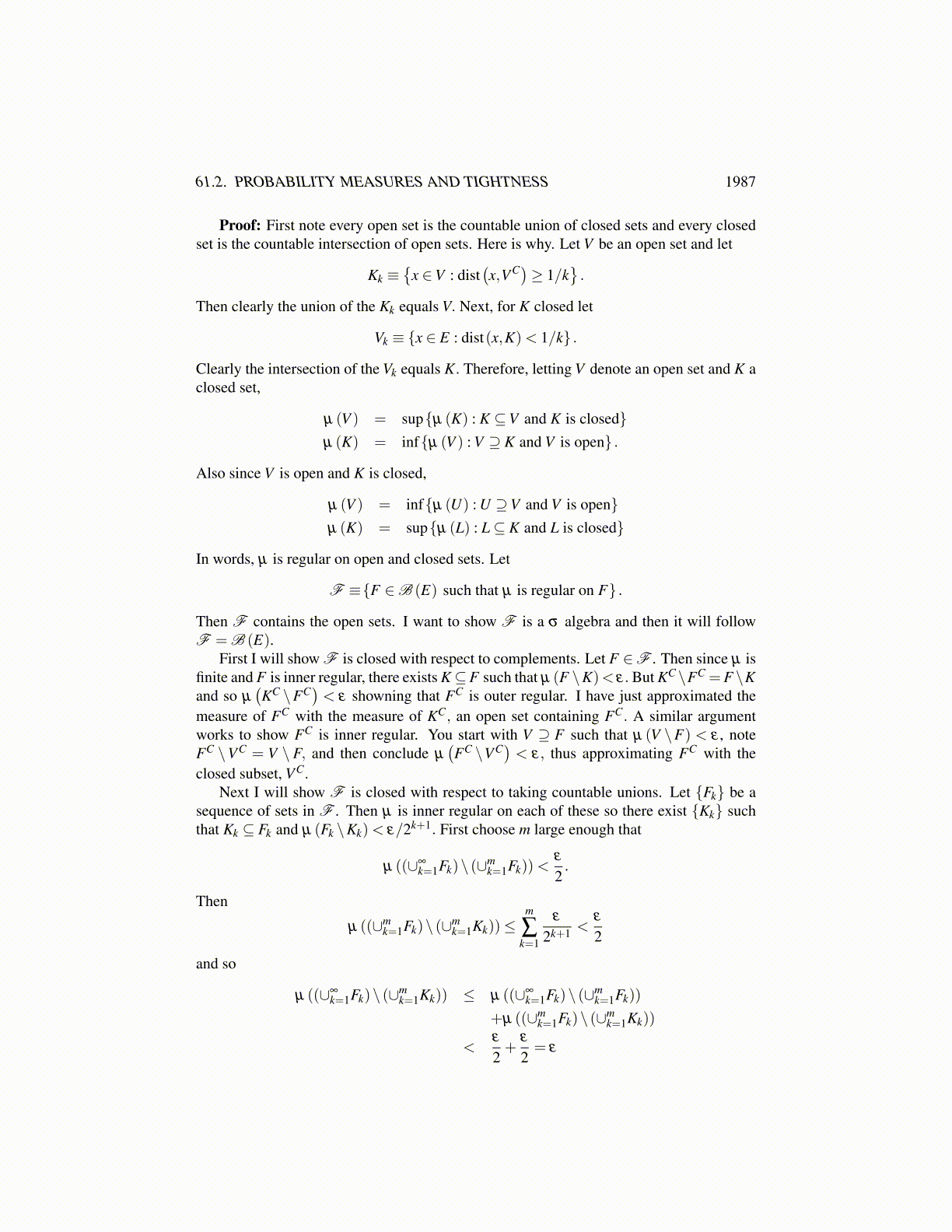
61.1. CONDITIONAL EXPECTATION IN BANACH SPACES 1987
Thus, if A ∈ G , ∫A
ZndP =m
∑k=1
xk
∫A
E(XFk |G
)dP
=m
∑k=1
xk
∫AXFk dP
=m
∑k=1
xkP(Fk ∩A) =∫
AXndP (61.1.5)
Then since E(XFk |G
)≥ 0,
||Zn|| ≤m
∑k=1||xk||E
(XFk |G
)Thus if A ∈ G ,
E (||Zn||XA) ≤ E
(m
∑k=1||xk||XAE
(XFk |G
))=
m
∑k=1||xk||
∫A
E(XFk |G
)dP
=m
∑k=1||xk||
∫AXFk dP = E (XA ||Xn||) . (61.1.6)
Note the use of ≤ in the first step in the above. Although the Fk are disjoint, all that isknown about E
(XFk |G
)is that it is nonnegative. Similarly,
E (||Zn−Zm||)≤ E (||Xn−Xm||)
and this last term converges to 0 as n,m→∞ by the properties of the Xn. Therefore, {Zn} isa Cauchy sequence in L1 (Ω;E;G ) . It follows it converges to some Z in L1 (Ω;E,G ) . Thenletting A ∈ G , and using 61.1.5,∫
AZdP =
∫XAZdP = lim
n→∞
∫XAZndP = lim
n→∞
∫A
ZndP
= limn→∞
∫A
XndP =∫
AXdP.
Then define Z ≡ E (X |G ).It remains to verify ||E (X |G )|| ≡ ||Z|| ≤ E (||X || |G ) . This follows because, from the
above,||Zn|| → ||Z|| , ||Xn|| → ||X || in L1 (Ω)
and so if A ∈ G , then from 61.1.6,
1P(A)
∫A||Zn||dP≤ 1
P(A)
∫A||Xn||dP
and so, passing to the limit,
1P(A)
∫A||Z||dP≤ 1
P(A)
∫A||X ||dP =
1P(A)
∫A
E (∥X∥|G )dP